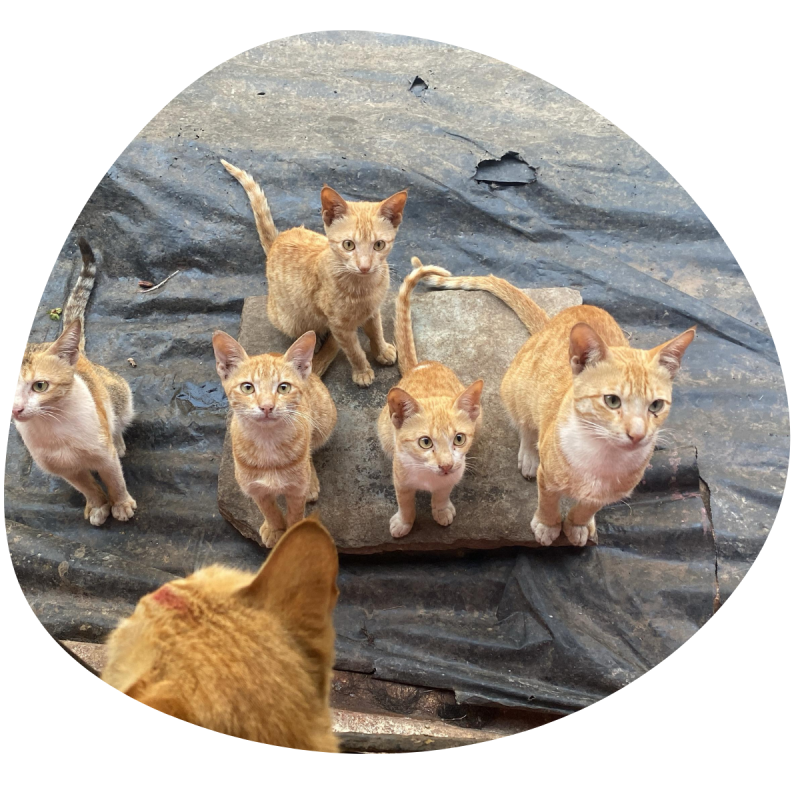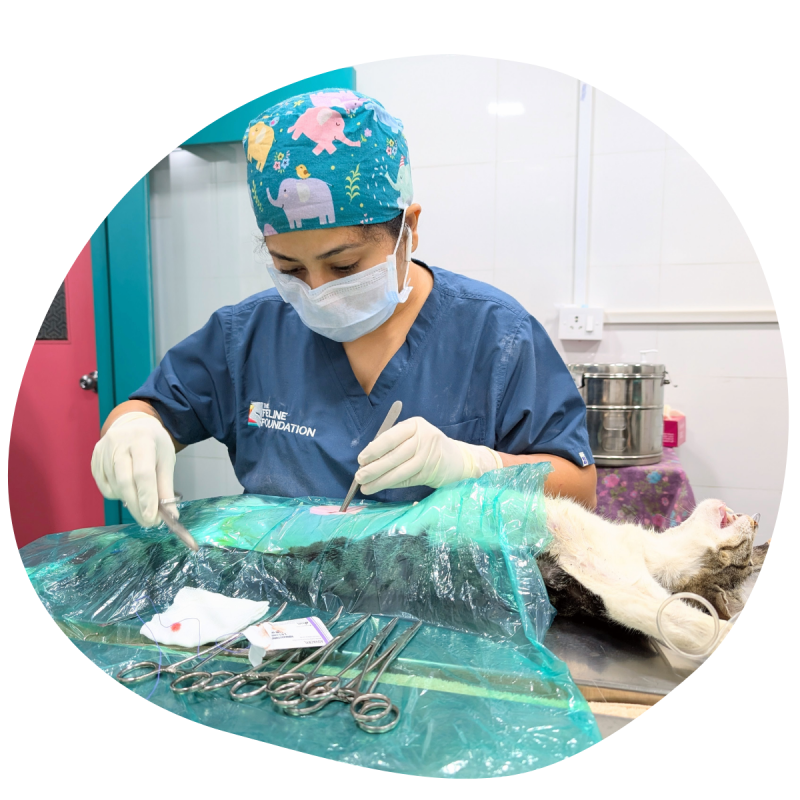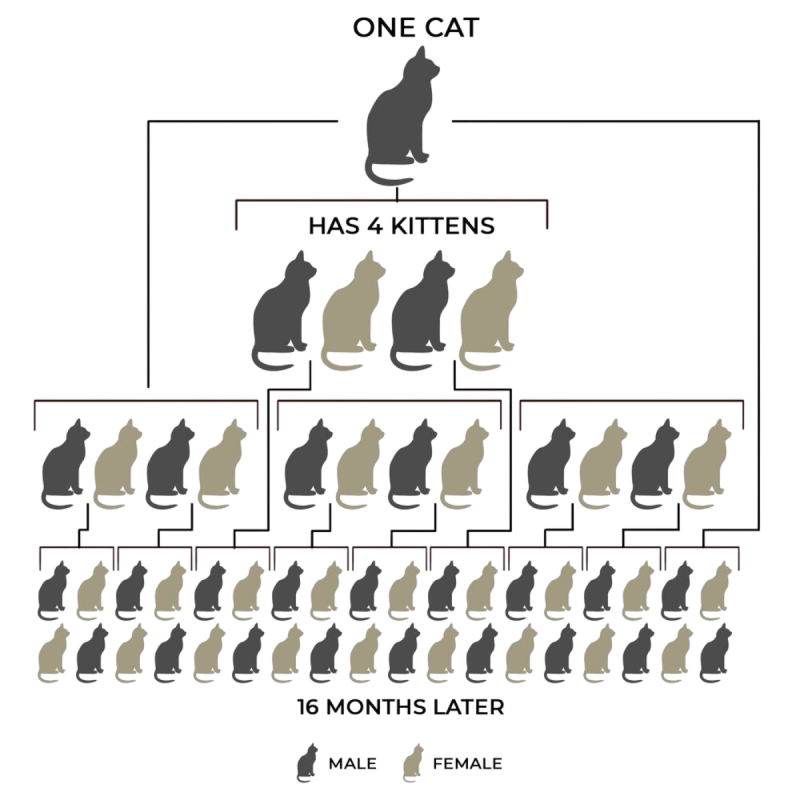Sterilisation is a surgical procedure done on both male and female cats that prevents unwanted litters. Performed by skilled veterinarians, it is a routine procedure requiring only basic post-operative care for a few days. It is done completely under anaesthesia so it is painless and humane.


We sterilise 400 cats per month. In addition to the surgery, we also keep the cats for the duration of their post-operative care at our facility and vaccinate every cat against rabies. Our sterilisation drive is open to stray as well as pet cats.
Cats from anywhere in Mumbai, Navi Mumbai or similar nearby areas can be sterilised at The Feline Foundation for a small fee. Cats in our TNR Project areas (see below) are eligible for free-of-cost sterilisation.
The stray cat population in Mumbai has grown very rapidly in the last decade or so, caused by rapid urban development in the city. There are now an estimated million + stray cats in Mumbai, and the population is still rising. The uncontrolled breeding among stray cats without any targeted intervention has led to overcrowding, competition for even basic resources like food and water, increased transmission of diseases, and overall extremely poor welfare.
Cats face issues such as starvation, infections from widespread germs and parasites, exposure to harsh weather, injuries from vehicles and predators, and more. Sadly, the average lifespan of a stray cat is only 6-8 years compared to 18-20 years of a pet indoor cat. Without sterilisation, this population explosion perpetuates a cycle of suffering.

The Feline Foundation conducts sterilisation drives in Andheri West using the “Trap- Neuter-Return” approach. This is a very common method used to reduce the size of the cat population by capturing them, spaying/neutering them and returning them to the exact location where they were picked up from, hence the name – Trap – Neuter – Return.
The Feline Foundation implements a zonewise approach to TNR so as to make the maximum impact with our resources. The approach involves sterilising animals in larger numbers on an area-by-area basis rather than taking individual cats from different locations.
By sterilising most of the cats in one area before moving to the next, it ensures the population in that area remains stable rather than continuing to multiply over time.